Discover Costa Rica’s Wildlife (the Right Way)
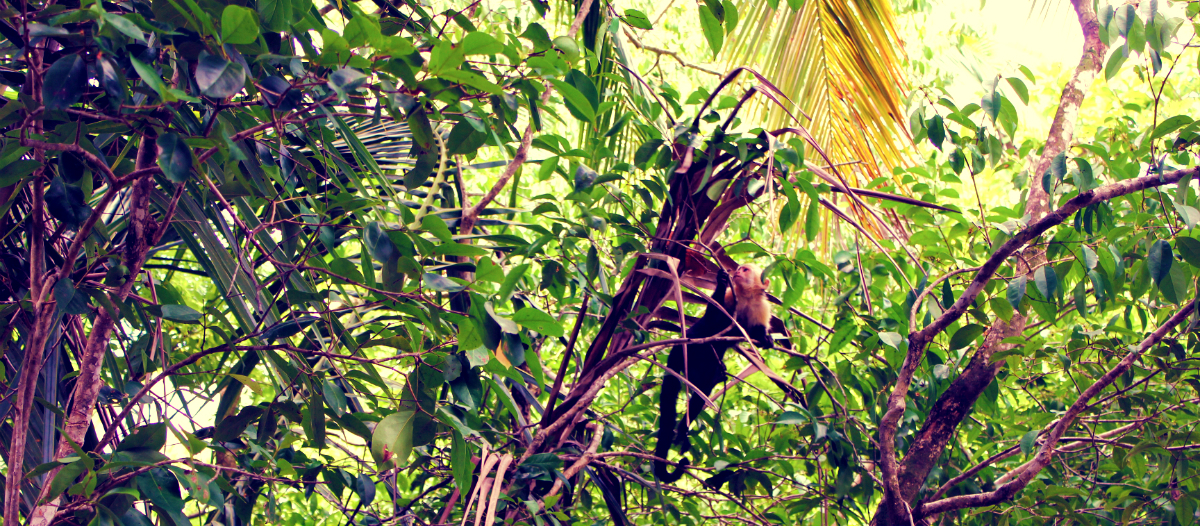
Costa Rica’s wildlife is undeniably incredible. The country has one of the highest densities of biodiversity on the planet, which means that you can see all kinds of monkeys, lizards, parrots and even jaguars if you know where to look. One of the reasons that Costa Rica is so rich in wildlife is because it is home to a variety of different ecosystems, including tropical rainforests, cloud forests and other worldly mangrove swamps. Costa Rica also has 12 different climatic zones, enabling a whole host of plants and animals to thrive.
Costa Rica’s wildlife is a big draw for tourists who come to explore the National Parks and rainforests in search of endangered tapirs and elusive two-toed sloths. But, tropical ecosystems are incredibly fragile, and if we are not careful then our adventures in paradise could cause irreparable damage.
An Encounter with Costa Rica’s Wildlife…
During our stay at Hacienda Baru eco-lodge, which is situated in an area of dense primary and secondary rainforest, we saw another tourist unwittingly mistreating an animal. One evening when we were walking along the path through the lodge, we encountered a large lizard also on the path. The lizard froze upon seeing us, so we stopped to wait for it to move on.
Another guest at the lodge came hurtling out of the bushes to the side of us, intent on catching the lizard! Her fingers missed it by inches, and she moaned to her friend that she “almost had it.” The petrified lizard disappeared into the drain, and fortunately the two girls didn’t stick around too long as they were quickly distracted by something else.
Though the girl wasn’t intending to be harmful, her behaviour was irresponsible and even foolish. She obviously had no idea that the particular lizard she was chasing was a black ctenosaur, equipped with muscular jaw, sharp teeth and known for delivering a nasty bite to humans that get too close.
Costa Rican wildlife can be dangerous. Snakes and frogs in particular sometimes have extremely powerful poisons. Fortunately, if you aren’t posing a threat to them or their offspring, they will more than likely leave you alone.
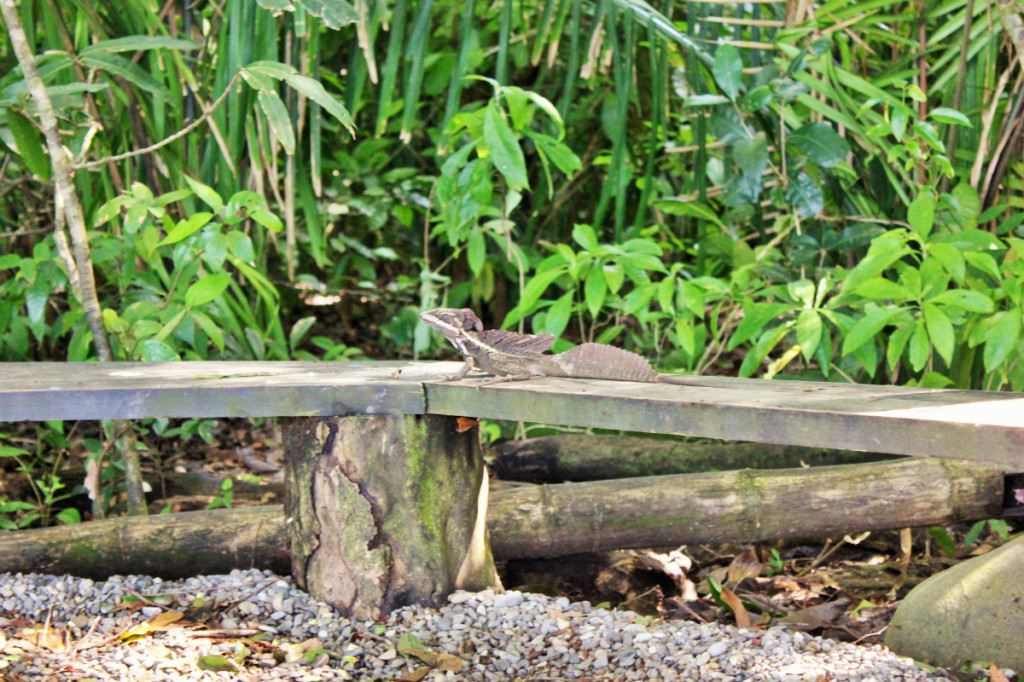
A Plumed Basilisk, more commonly know as a Jesus Christ lizard due to is ability to run across water. We spotted this one in Manuel Antonio National Park.
Responsible Wildlife Tourism
Wildlife tourism should be responsible and cause as little disturbance as possible. There are lots of opportunities to get really close to wild animals, but it’s important for travellers to remember that these animals are wild and that we are in their territory. When exploring national parks or attending a wildlife tour, travellers should:
- Keep their distance from animals
- Never try to touch or disturb animals
- Never feed animals
- Never call out to the animals
- Keep noise to a minimum
- Turn the flash off on their camera
Disturbing animals can scare them, causing them stress and even illness. The best way to appreciate wildlife is from a distance, so that the animals are able to continue doing as they would if you weren’t there.
Discover Costa Rica’s Wildlife
You can discover Costa Rica’s wildlife even when you’re just walking around, you might see sloths hanging from the trees above or toucans flying overhead. However, there are many designated areas where you can be almost certain to see some of Costa Rica’s wildlife.
National Parks
Costa Rica has 26 national parks where you can enjoy wildlife spotting. These protected places make up an admirable 28% of the country’s total territory. Hiring a guide isn’t a necessity and you will still be able to spot some wildlife on your own, however there are many benefits to having a guide if you can afford the little bit extra.
Guides definitely increase your chances of seeing some exciting wildlife that you might not otherwise spot, and they are equipped with a telescope, which they angle for you, so that you can have a clear view of the animals that are further away. Hiring a guide also a great way to support the local community, as guides are often from the local area.
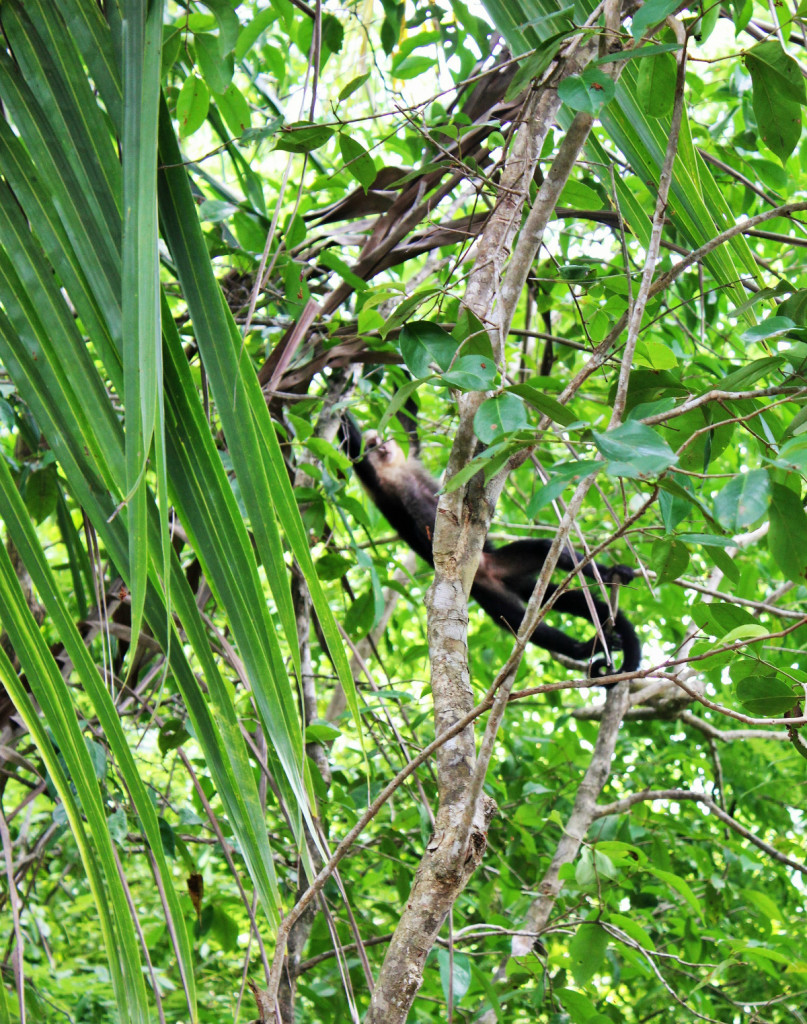
Where there’s one Capuchin ,the rest of the troop (10-40) won’t be far behind. Watching Capuchins playing and searching for food in the branches is totally engrossing.
Eco-Lodges
Eco-lodges are also excellent places to see some of Costa Rica’s wildlife. During our eco-lodge stays we were fortunate enough to see black and green poison dart frogs, crocodiles, hummingbirds, toucans, Capuchins, sloths, butterflies of all variety and even an armadillo – though not all of those were captured on camera.
If you read my post on Tipi Jungla, you’ll know that we also had the chance to meet a baby sloth who had been rescued by the couple who run the eco-lodge. The 4 month year old baby had lost its mother and fallen down from the treetops. The couple found it, took it to their home and found a local sloth vet who will act as its mother for the next 6 months or so until it is ready to be released back into the wild.
There are also a huge number of volunteering opportunities available in Costa Rica for those who have a a longer amount of time here. These programmes range from helping out in a Jaguar sanctuary, saving sea turtles and even providing aid for stray animals.
We’re really looking forward to the Arribada, an incredible night during which thousands of turtles come ashore to lay their eggs on Costa Rica’s beaches.
For more information on responsible tourism practices and visiting forested national parks, head over to Right Tourism.
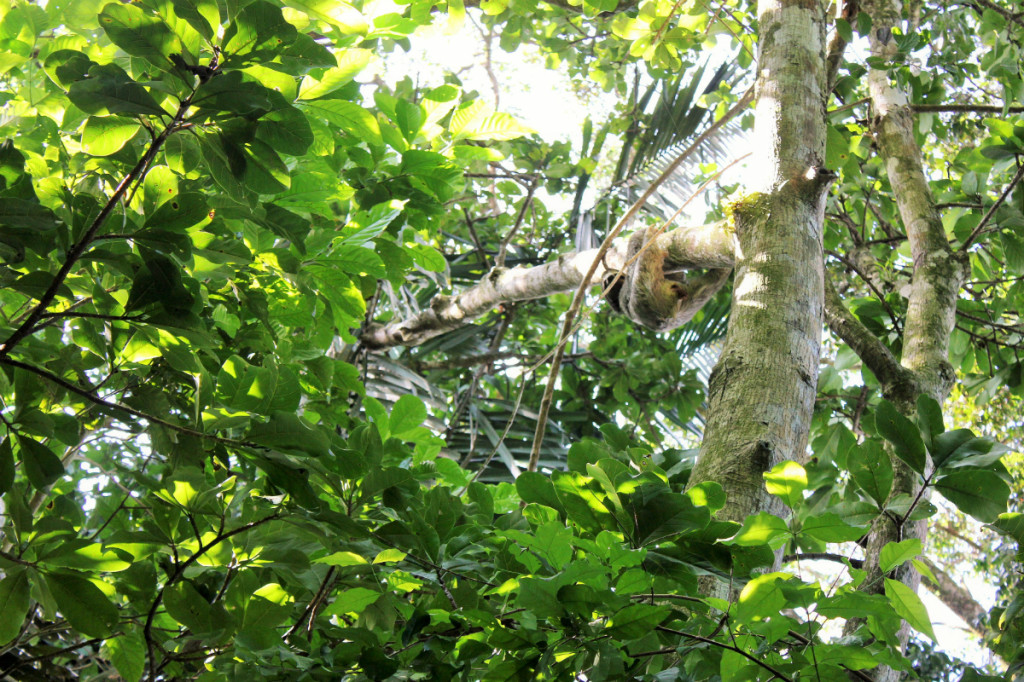

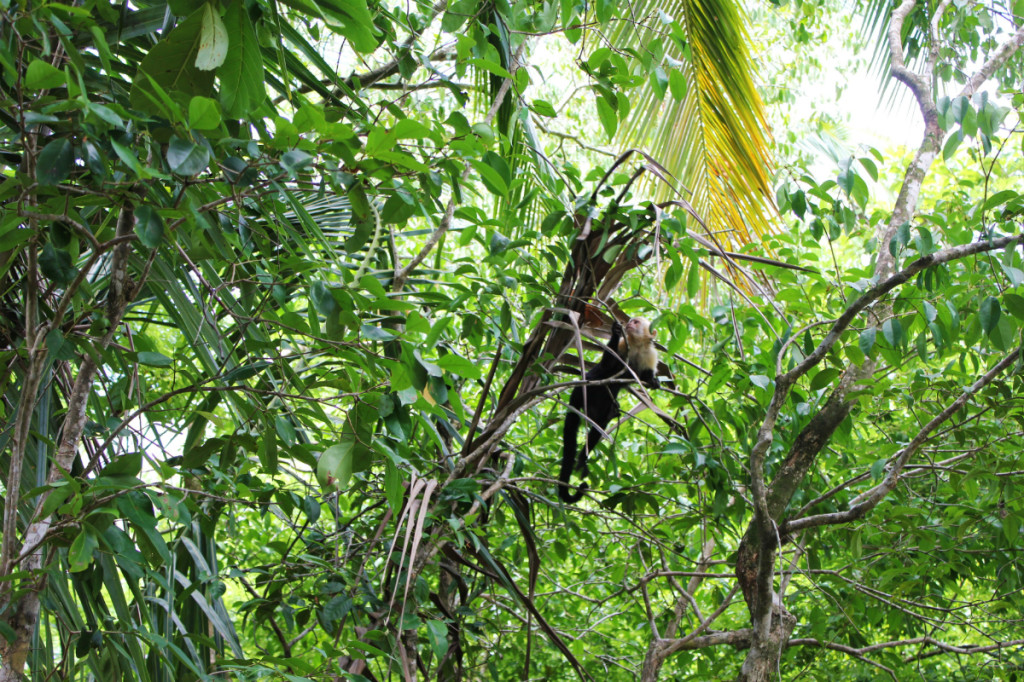

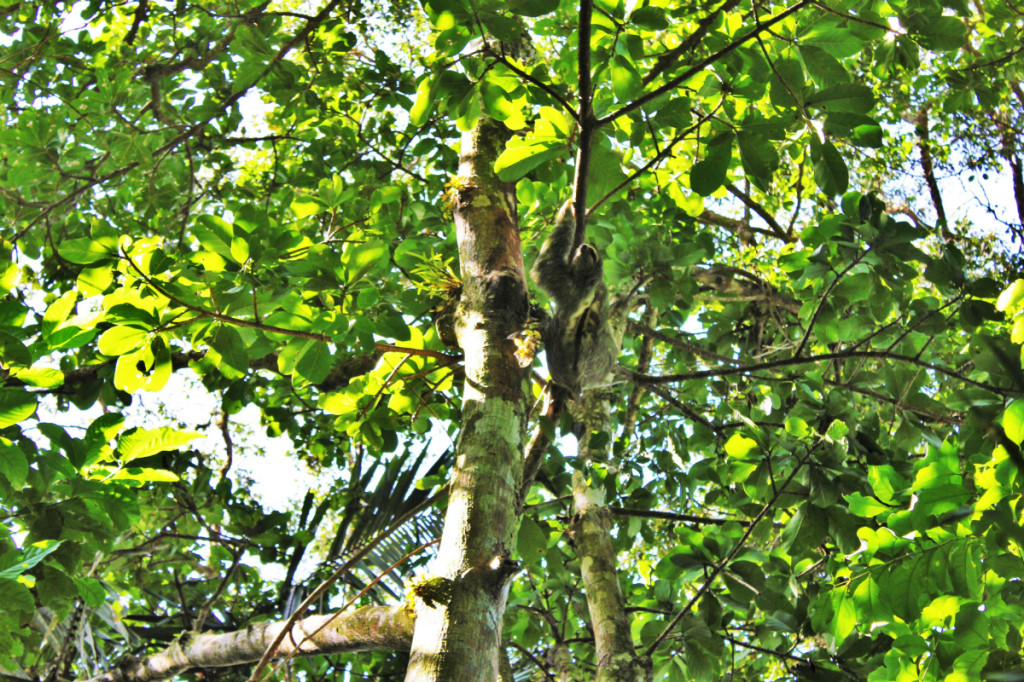
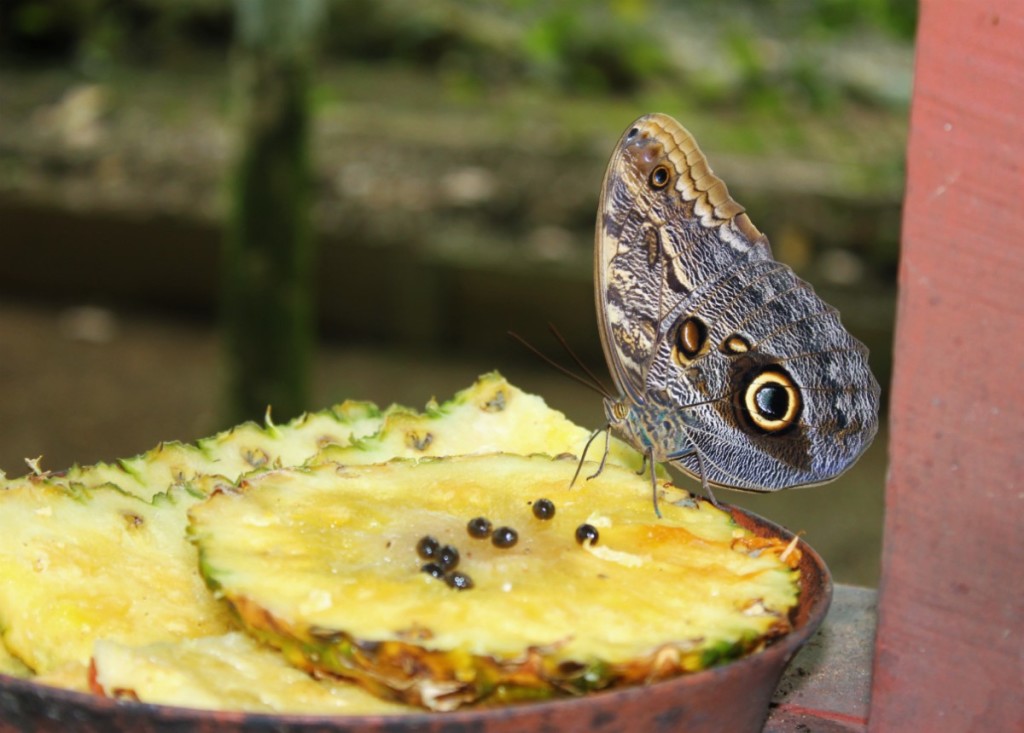
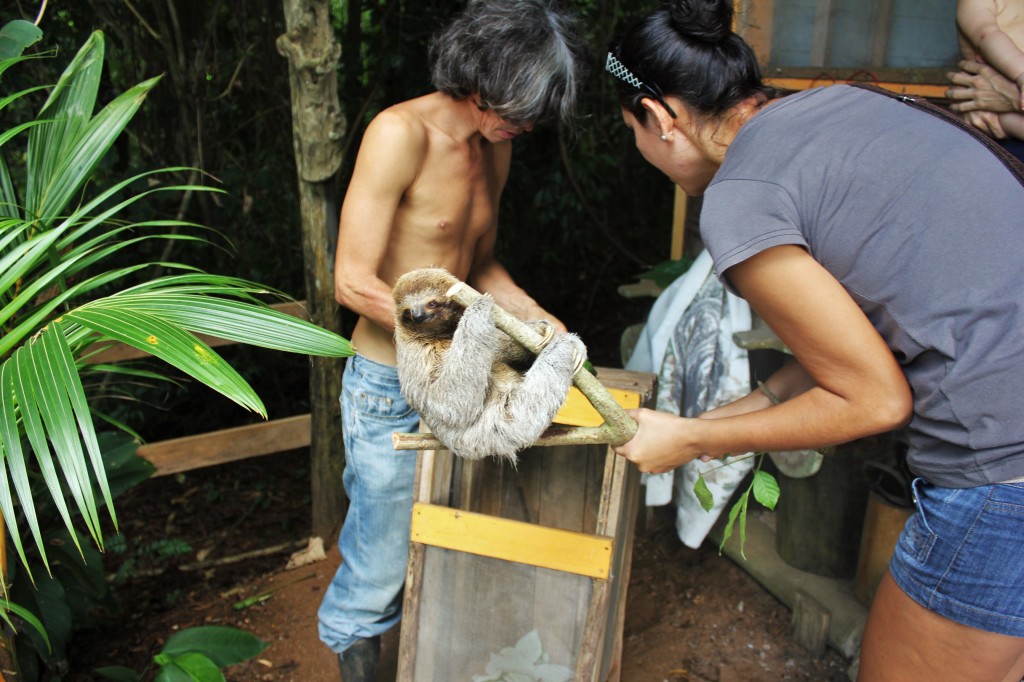
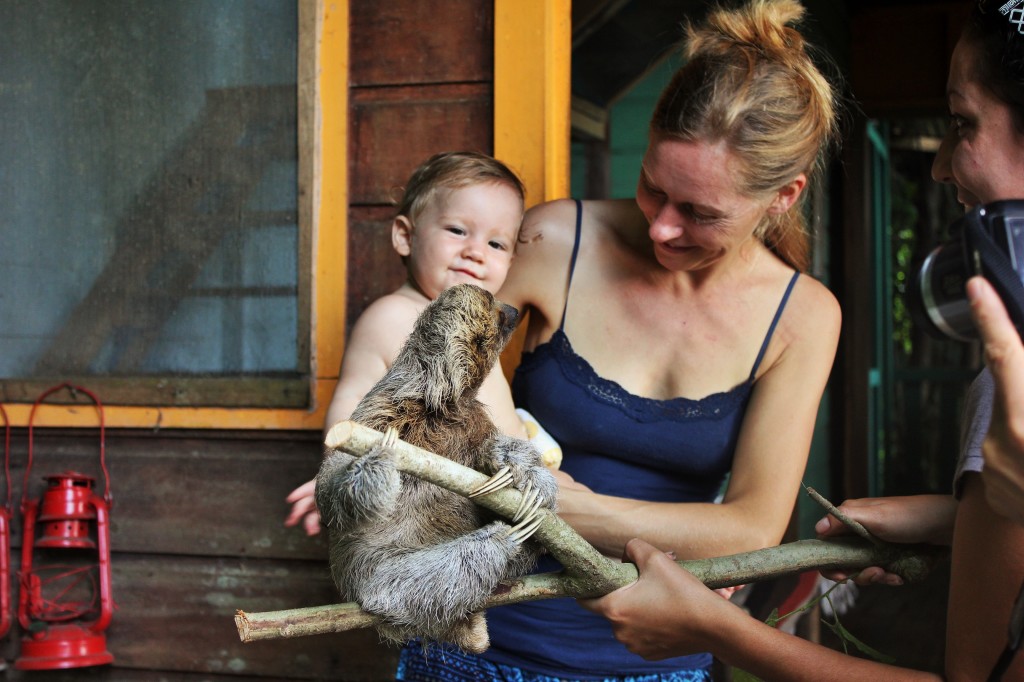






francaangloitalian
Look at these cute sloths, I’m so jealous but happy too you got to see them and have such an amazing experience. I really need to get to Costa Rica at some point, there is too much I’d love to do and see.
Charlie on Travel
They are so cute! It was really great to see them in the wild. I’m sure that you will make it to Costa Rica, though I know what you mean about there being so much to do and see everywhere.
Natalie
When I was in Malawi this year I stayed in a lodge that was in the buffer zone of one of the national parks. I was waiting for dinner when a huge lizard appeared on the path! I also missed a herd of elephants who had walked through the lodge earlier in the day…
Its much nicer to see animals interacting with there own environment (be it a slightly adapted one in the lodge). Being able to walk freely and undisturbed (I was like the only guest in the whole lodge).
Charlie on Travel
That sounds amazing. I think it’s so much better seeing wildlife in it’s natural habitat too, or even in large animal sanctuaries at least. Shame that you missed the elephants though!
Katie Featherstone
Wow, Central America’s wildlife is really amazing. I went to Honduras years ago and was blown away by it. Your Capuchin monkey is very cute! I think I need to get to Costa Rica soon. :)
Charlie on Travel
Oh yes! I’m really keen to go to Honduras, hoping to get there some time in 2015. Was the wildlife there similar to in Costa Rica?
Rob
Conservation is close to my heart and it’s great to see a post about eco friendly tourism. Some staggering wildlife you got to see, I’m very jealous :-)
Charlie on Travel
Hi Rob – thanks for commenting and it’s great to hear conservation is also close to your heart. Oh the wildlife here is incredible! I’m sure you will get to see it too one day the future :)
Emily
It’s a shame that people
Emily
don’t respect animals in Parks, reserves and other areas. I always get miffed when I see trash and obvious signs that humans have been around :(
Charlie on Travel
Yes, it is a shame. I’ve seen a lot of people throwing down their plastic water bottles recently, and I also get miffed.
Simon
Your wonderful photographs brought back great memories of our visit to Costa Rica in 2010. Looking forward to revisiting soon.